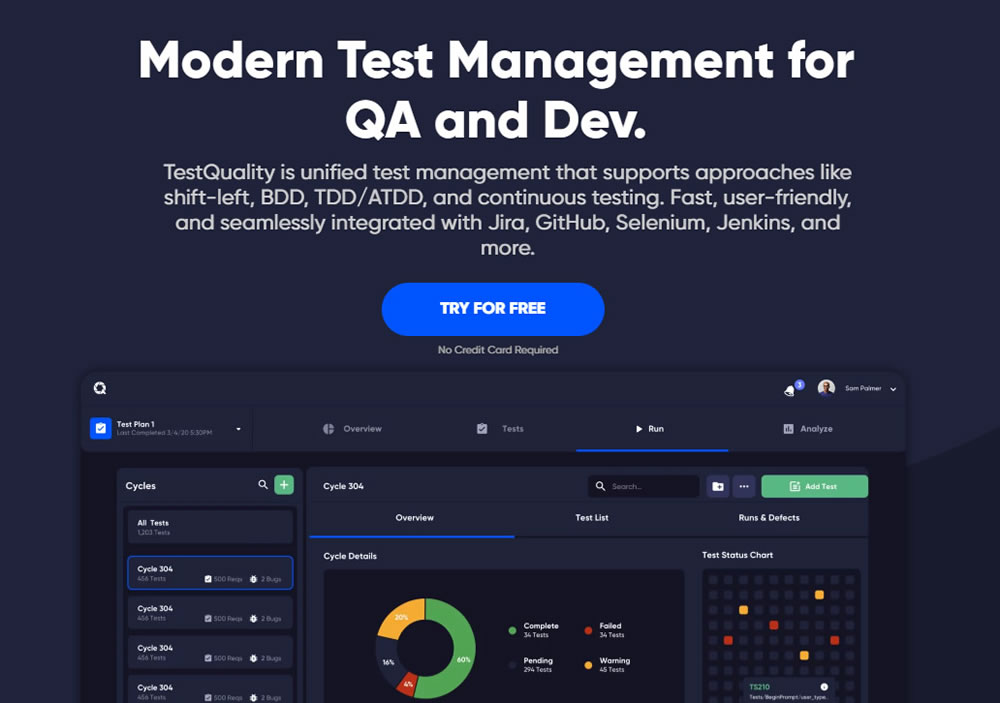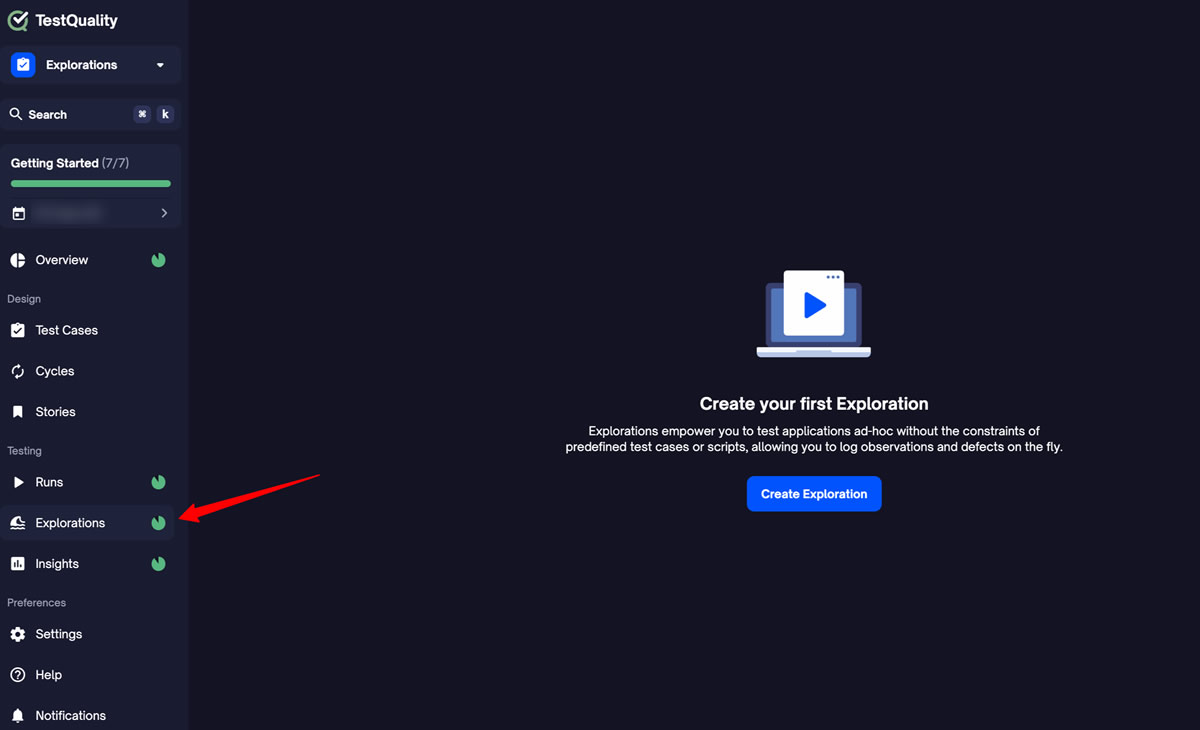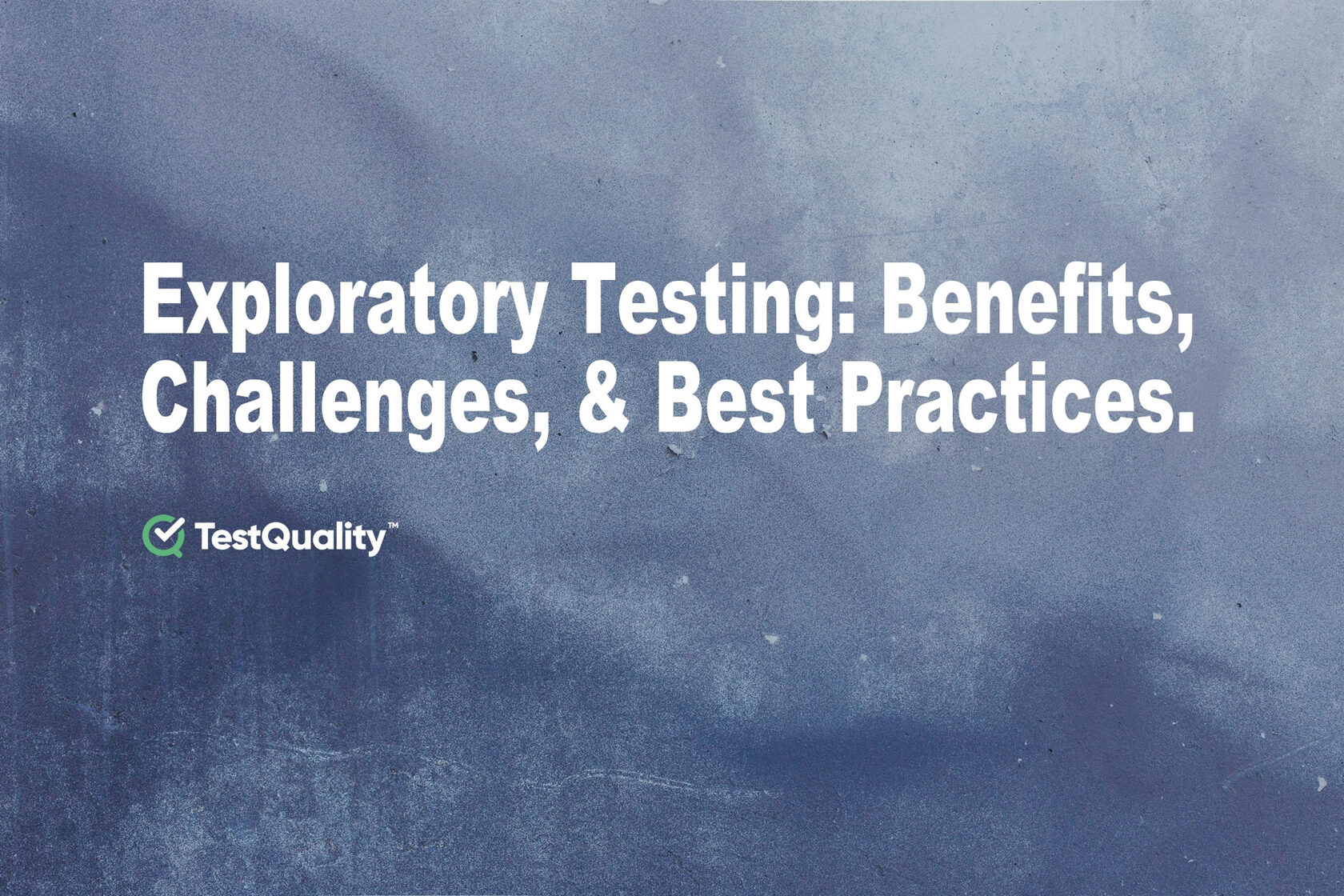Exploratory testing, a dynamic and versatile approach to software testing, has gained significant traction in recent years. In previous blog posts we explained what's Exploratory Testing and why it's so helpful. Also, we have discussed How to develop a Structured Exploratory testing strategy and we introduced why it is the real asset to exceptional functionality and superb UX if you want your QA to go above and beyond basic expectations. Besides, we analized if our Exploratory Testing should be be automated.
Unlike traditional scripted testing, which follows predefined test cases, exploratory testing encourages testers to actively engage with the software, learning about its functionalities, identifying potential issues, and adapting their testing strategies on the fly.
The Essence of Exploratory Testing
At its core, exploratory testing is a method that empowers testers to leverage their creativity, knowledge, and intuition to explore the software and uncover defects. It's a departure from the rigid structure of scripted testing, allowing for greater flexibility and adaptability.
Benefits of Exploratory Testing
Exploratory testing offers a unique set of benefits that can significantly enhance the quality and efficiency of your development process. By empowering testers to explore the software creatively and intuitively, exploratory testing can uncover hidden defects, adapt to changing requirements, improve test coverage, provide faster feedback, and foster a more innovative work environment.
1. Uncovering Hidden Defects:
Exploratory testing's unstructured nature can unearth defects that might be overlooked by scripted testing. Testers are free to follow their intuition and explore unexpected paths, leading to the discovery of hidden bugs. For instance, Netflix's "Chaos Monkey" tool, which introduces random failures into their production environment, has been instrumental in identifying vulnerabilities that might otherwise remain hidden.
2. Adaptability to Changing Requirements:
In today's fast-paced development environments, requirements can change rapidly. Exploratory testing's flexibility allows testers to adapt their approach on the fly. Spotify, for example, uses feature flags to experiment with new features and gather user feedback. Exploratory testing plays a crucial role in identifying potential issues before a feature is fully released.
3. Improved Test Coverage:
By leveraging testers' knowledge and experience, exploratory testing can enhance test coverage. Testers can focus on areas of the application that they believe are most critical or where they have identified potential risks. This can help to ensure that a wider range of scenarios and use cases are tested.
4. Faster Feedback Loop:
Exploratory testing can provide quicker feedback to developers. Testers can identify issues early in the development cycle, enabling faster resolution and preventing problems from escalating. This can lead to improved software quality and reduced development costs.
5. Enhanced Creativity and Innovation:
Exploratory testing encourages testers to think creatively and outside the box. This can lead to innovative testing approaches and the discovery of unexpected defects. Additionally, exploratory testing can foster a more creative and collaborative work environment.

Disadvantages of Exploratory Testing
While exploratory testing offers numerous advantages, it also presents certain challenges that organizations must carefully consider. These drawbacks include the lack of documentation, subjectivity, difficulty in measuring effectiveness, potential for overreliance, and the need for skilled testers. To mitigate these challenges and maximize the benefits of exploratory testing, organizations should implement best practices such as combining it with scripted testing, utilizing test charters, fostering collaboration, documenting sessions, and providing adequate training and support.
1. Lack of Documentation:
Unlike scripted testing, exploratory testing may not have detailed documentation of test cases. This can make it challenging to reproduce defects or track test coverage. However, it's possible to document exploratory testing sessions using techniques such as session-based test management.
2. Subjectivity:
Exploratory testing can be subjective, as it relies heavily on the tester's individual skills and experience. Different testers may approach the same application differently, potentially leading to inconsistent results. To mitigate this, organizations can provide testers with clear guidelines and training on exploratory testing techniques.
3. Difficulty in Measuring Effectiveness:
Quantifying the effectiveness of exploratory testing can be difficult. It's challenging to measure the number of defects found or the overall quality improvement achieved. However, organizations can use metrics such as defect density, defect severity, and customer satisfaction to assess the impact of exploratory testing.
4. Potential for Overreliance:
If not used in conjunction with other testing methods, relying solely on exploratory testing can lead to gaps in test coverage. It's important to combine exploratory testing with scripted testing and other techniques to ensure comprehensive coverage.
5. Requires Skilled Testers:
Effective exploratory testing requires skilled testers with a deep understanding of the application and the ability to think critically. Organizations should invest in training and development to equip their testers with the necessary skills.
Best Practices for Exploratory Testing
To maximize the benefits of exploratory testing and mitigate its potential drawbacks, organizations should implement best practices that balance flexibility with structure, collaboration with individual initiative, and documentation with adaptability.
Also, by combining exploratory testing with scripted testing, utilizing test charters, fostering collaboration, documenting sessions, and providing adequate training and support, organizations can harness the full potential of this powerful testing approach.
- Combine with Scripted Testing: While exploratory testing offers flexibility and creativity, scripted testing can provide a structured framework and ensure comprehensive coverage.
- Utilize Test Charters: Test charters can provide guidelines for exploratory testing activities, helping to ensure that testing is focused and effective.
- Encourage Collaboration: Fostering a collaborative environment can enhance the effectiveness of exploratory testing. Testers can share their findings, learn from each other, and brainstorm new testing approaches.
- Document Exploratory Testing Sessions: Although it may be challenging to document every detail of exploratory testing sessions, keeping records of key findings and issues can be valuable for future reference.
- Provide Adequate Training and Support: Organizations should invest in training and development to equip their testers with the necessary skills for effective exploratory testing.
Real-World Challenges of Exploratory Testing
While exploratory testing offers numerous advantages, it also presents certain challenges that organizations must carefully consider. These challenges include the "explorer's dilemma", difficulty in reproducing defects, limited scalability, subjectivity and inconsistency, and difficulty in measuring effectiveness. To mitigate these challenges, organizations must implement strategies that balance flexibility with structure, consistency, and measurable outcomes.
- The "Explorer's Dilemma": Testers can become so engrossed in exploration that they lose sight of their overall goals, leading to wasted time and effort. To address this, organizations can provide testers with clear objectives and guidelines.
- Difficulty in Reproducing Defects: Exploratory testing can sometimes lead to the discovery of defects that are difficult to reproduce due to their transient nature or dependence on specific conditions. To mitigate this, testers can document their actions and environment carefully to aid in reproduction.
- Limited Scalability: Exploratory testing can be challenging to scale across large organizations with diverse teams and complex projects. To address this, organizations can establish standardized processes and guidelines for exploratory testing.
- Subjectivity and Inconsistency: Different testers may approach exploratory testing differently, leading to inconsistent results. To mitigate this, organizations can provide testers with clear guidelines and training on exploratory testing techniques.
- Difficulty in Measuring Effectiveness: It can be challenging to quantify the effectiveness of exploratory testing, as it's often difficult to measure the number of defects found or the overall quality improvement achieved. To address this, organizations can use metrics such as defect density, defect severity, and customer satisfaction.
How can TestQuality help you in Exploratory Testing
When using preset test scripts that may not cover all potential scenarios or when you need to explore the application to identify hidden bugs intuitively, exploratory testing is vital since it gives testers the freedom to explore, record observations, and detect bugs as they go. This guarantees a more comprehensive testing approach and helps find flaws that could go undetected.
Explorations provides the tools you need to conduct thorough and adaptive testing.
The Explorations feature in TestQuality works perfectly with your current testing process. It lets you connect explorations to goals, record bugs right in the platform, and keep track of all your exploring actions in one place. You can keep a clear, organized record of all testing activities in TestQuality by doing exploratory testing. This makes it easier to handle and look back on the testing process.

The Explorations tab within your project is your starting point for setting up a new exploratory test.
When you first start an Exploration, you will be taken to the Overview page, where you can see important information like the mission, milestones, and exploration statuses. To start logging your exploration, navigate to the "Logs" tab.

TestQuality simplifies the exploratory testing process by providing a robust logging system.
You can seamlessly capture your observations, findings, and ideas in real-time using the Logs tab. These notes are invaluable as they document the journey of your exploration. Assign statuses like Pass, Fail, or Other to categorize your results effectively. Additionally, you can attach relevant files, such as screenshots or documents, to provide context for your findings.
Furthermore, if you encounter any defects during your exploration, you can easily log them directly from the Logs tab, ensuring they're captured and tracked for further action.

TestQuality provides you with complete control over your exploratory testing sessions. Once you've concluded your exploration, you can easily finish it to close the session. If you need to make any changes to the overall exploration, you can edit the exploration details. And if the exploration is no longer relevant, you can delete it entirely.

These features empower you to efficiently manage your exploratory testing activities and maintain a well-organized testing environment.
Embrace the power of exploratory testing with TestQuality. Our intuitive app empowers you to uncover hidden defects, adapt to evolving requirements, and enhance test coverage. While exploratory testing offers immense value, it's crucial to complement it with other testing methods for maximum effectiveness. Sign up for a free trial today and experience the transformative impact of TestQuality on your testing process
Conclusion
Exploratory testing offers a valuable approach to software testing, providing numerous benefits such as uncovering hidden defects, adapting to changing requirements, and enhancing test coverage. However, it's essential to acknowledge its drawbacks and implement best practices to maximize its effectiveness. By carefully considering the benefits and drawbacks and combining exploratory testing with other testing methods, organizations can leverage this powerful approach to improve software quality and ensure the success of their projects.
